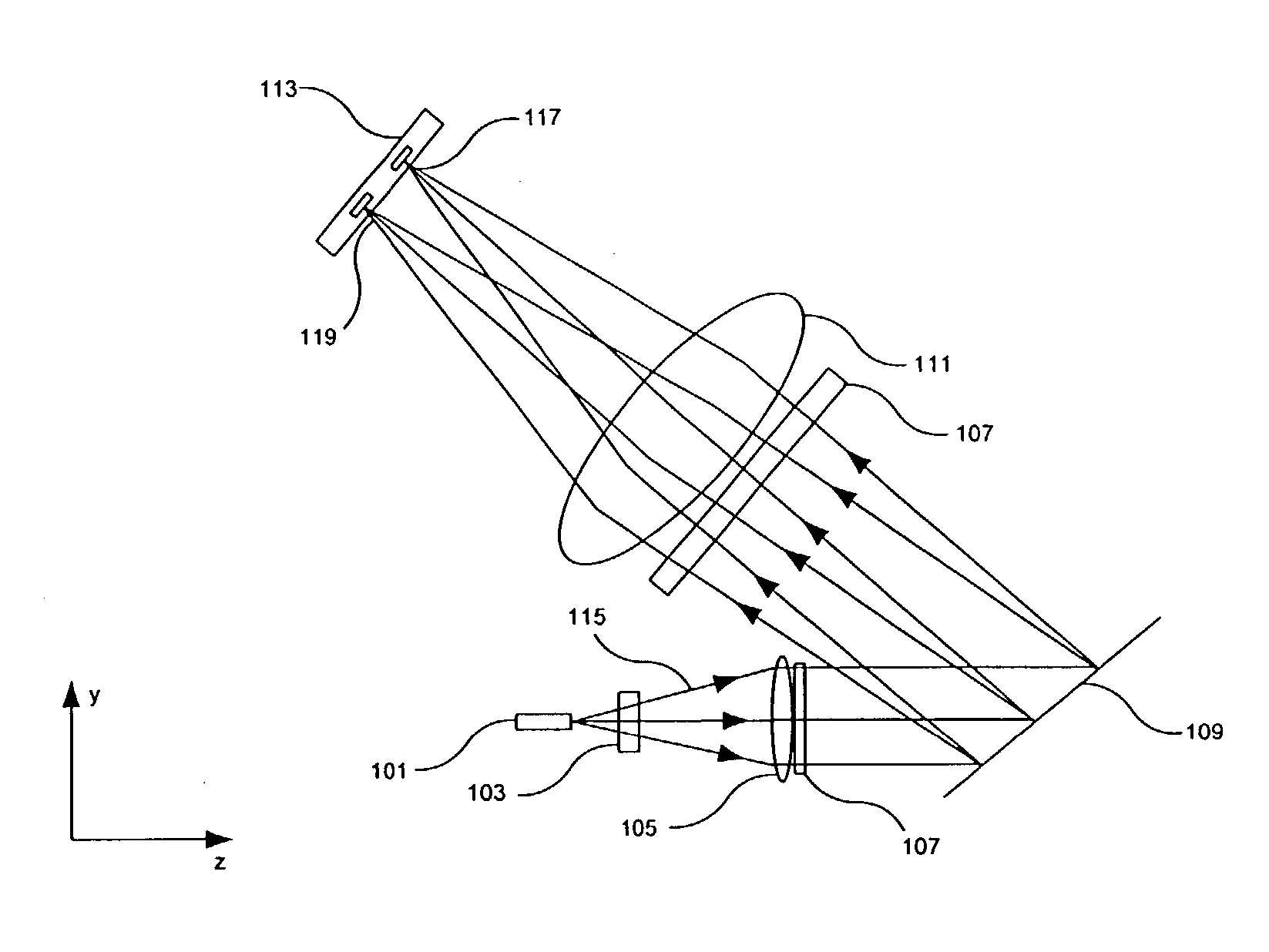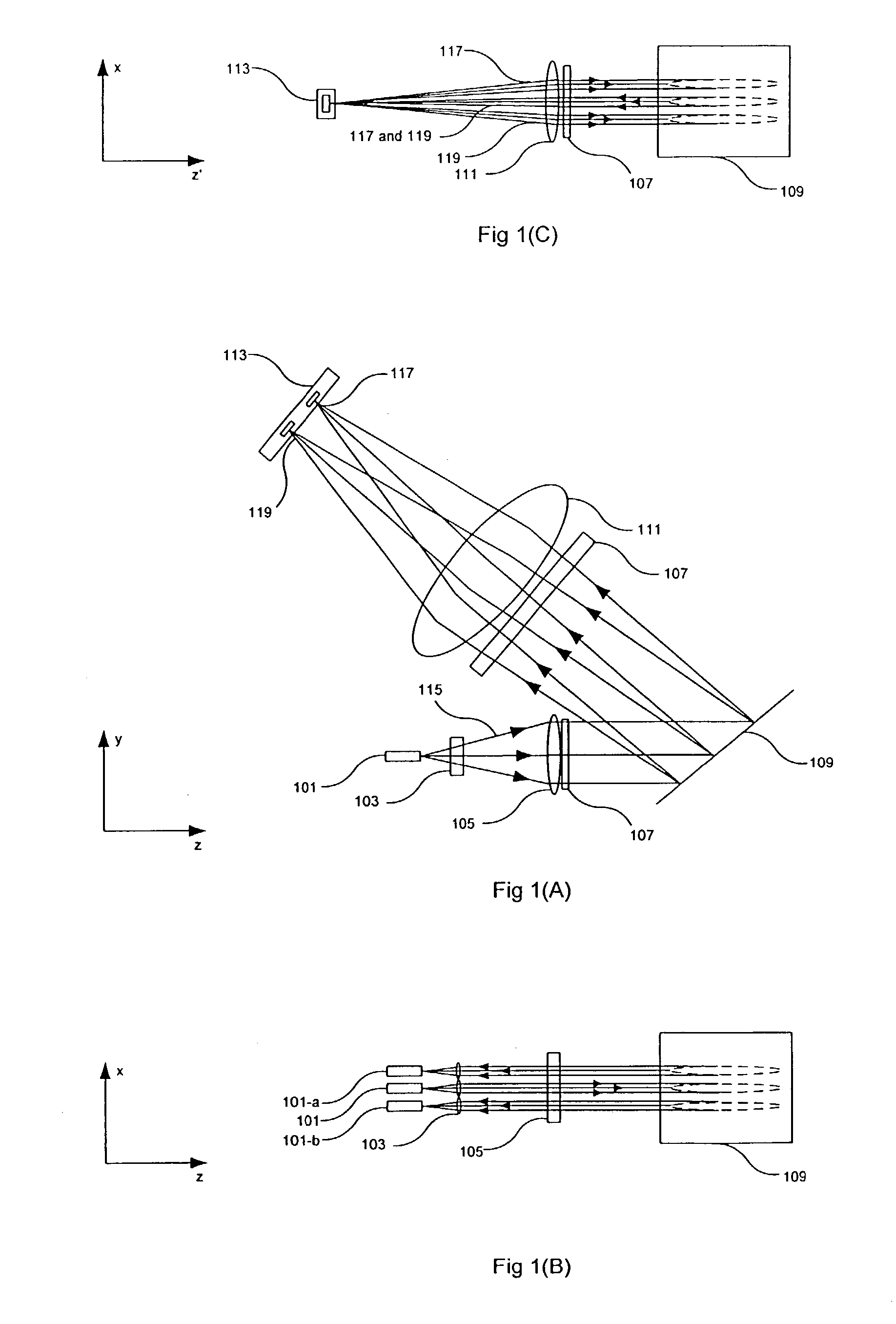Wavelength selective optical switch
a selective optical switch and wavelength technology, applied in the field of optical communication, can solve the problems of high installation cost of fiber optics, high cost of installing fiber optics, and high cost of aligning fibers for each wavelength, and achieve the effect of reducing pdl and reducing pdl
- Summary
- Abstract
- Description
- Claims
- Application Information
AI Technical Summary
Benefits of technology
Problems solved by technology
Method used
Image
Examples
Embodiment Construction
[0065]The wavelength selective optical switch of the invention has numerous applications, including use in fiber optic telecommunications systems. For purposes of illustration, the embodiments described below detail demultiplexing, switching, and multiplexing in a multi-channel fiber optic telecommunication systems. Exemplary references to an optical channel, or simply to a channel, should be understood to mean an optical signal with a centered wavelength and an upper and lower wavelength. Channel spacing is measured from the center of the first channel to the center of an adjacent channel.
[0066]A two channel grating-based optical switch, employing one embodiment of the invention, is detailed in FIG. 1(A), FIG. 1(B), and FIG. 1(C). FIG. 1(A), FIG. 1(B), and FIG. 1(C) detail different views of the same device. It is of note that while only two channels are used in this example, a substantially larger number of channels and optical ports may be employed. The wavelength selective optic...
PUM
 Login to View More
Login to View More Abstract
Description
Claims
Application Information
 Login to View More
Login to View More - R&D
- Intellectual Property
- Life Sciences
- Materials
- Tech Scout
- Unparalleled Data Quality
- Higher Quality Content
- 60% Fewer Hallucinations
Browse by: Latest US Patents, China's latest patents, Technical Efficacy Thesaurus, Application Domain, Technology Topic, Popular Technical Reports.
© 2025 PatSnap. All rights reserved.Legal|Privacy policy|Modern Slavery Act Transparency Statement|Sitemap|About US| Contact US: help@patsnap.com



